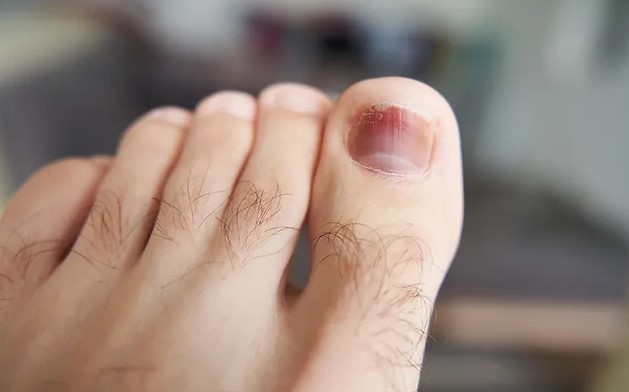Dealing with a Bruised Toenail: Causes, Symptoms, and Home Care

A bruised toenail can be a painful and uncomfortable experience. It is caused by trauma to the nail, such as dropping something heavy on it or stubbing it. The symptoms of a bruised toenail include pain, swelling, discoloration, and tenderness. Fortunately, there are several home care treatments that can help reduce the pain and discomfort associated with a bruised toenail. This article will discuss the causes, symptoms, and home care treatments for a bruised toenail.
What Causes a Bruised Toenail and How Can You Prevent It?
A bruised toenail is a common injury that can be caused by a variety of activities, such as running, playing sports, or wearing ill-fitting shoes. It occurs when the toenail is subjected to a blunt force, such as when it is stubbed or stepped on. This force can cause the toenail to become discolored, swollen, and painful.
Fortunately, there are several steps you can take to prevent a bruised toenail. First, make sure to wear shoes that fit properly and provide adequate cushioning and support. Shoes that are too tight or too loose can increase the risk of a bruised toenail. Additionally, it is important to avoid activities that involve a lot of running or jumping, as these can put extra strain on the toenails. Finally, if you do experience a bruised toenail, it is important to seek medical attention as soon as possible.
By following these simple steps, you can help to reduce your risk of a bruised toenail and ensure that your feet stay healthy and comfortable.
Symptoms of a Bruised Toenail and When to See a Doctor
A bruised toenail is a common injury that can be caused by a variety of activities, such as running, playing sports, or wearing ill-fitting shoes. Symptoms of a bruised toenail include pain, swelling, discoloration, and tenderness in the affected area. The toenail may also become thickened and may even detach from the nail bed.
If you suspect you have a bruised toenail, it is important to take steps to reduce the pain and swelling. Resting the foot and elevating it above the heart can help reduce swelling. Applying a cold compress to the affected area can also help reduce pain and swelling. Over-the-counter pain medications, such as ibuprofen, can also be taken to reduce pain.
If the pain and swelling do not improve after a few days, or if the toenail becomes detached, it is important to seek medical attention. A doctor can examine the toenail and determine the best course of treatment. In some cases, a doctor may recommend antibiotics to prevent infection. In more severe cases, surgery may be necessary to repair the toenail.
It is important to take care of a bruised toenail to prevent further injury and infection. If you suspect you have a bruised toenail, it is important to take steps to reduce the pain and swelling and seek medical attention if the symptoms do not improve.Dealing with a bruised toenail can be a painful and uncomfortable experience. It is important to identify the cause of the injury and take the necessary steps to prevent further damage. Symptoms of a bruised toenail include pain, swelling, discoloration, and tenderness. Home care for a bruised toenail includes rest, elevation, and icing the area. Over-the-counter medications may also be used to reduce pain and inflammation. If the injury does not improve with home care, it is important to seek medical attention.